Categories
Subjects
Authors
Artists
Venues
Locations
Calendar
Filter
Done
December 10, 2019 – Feature
Miami Roundup
Ricardo Mor
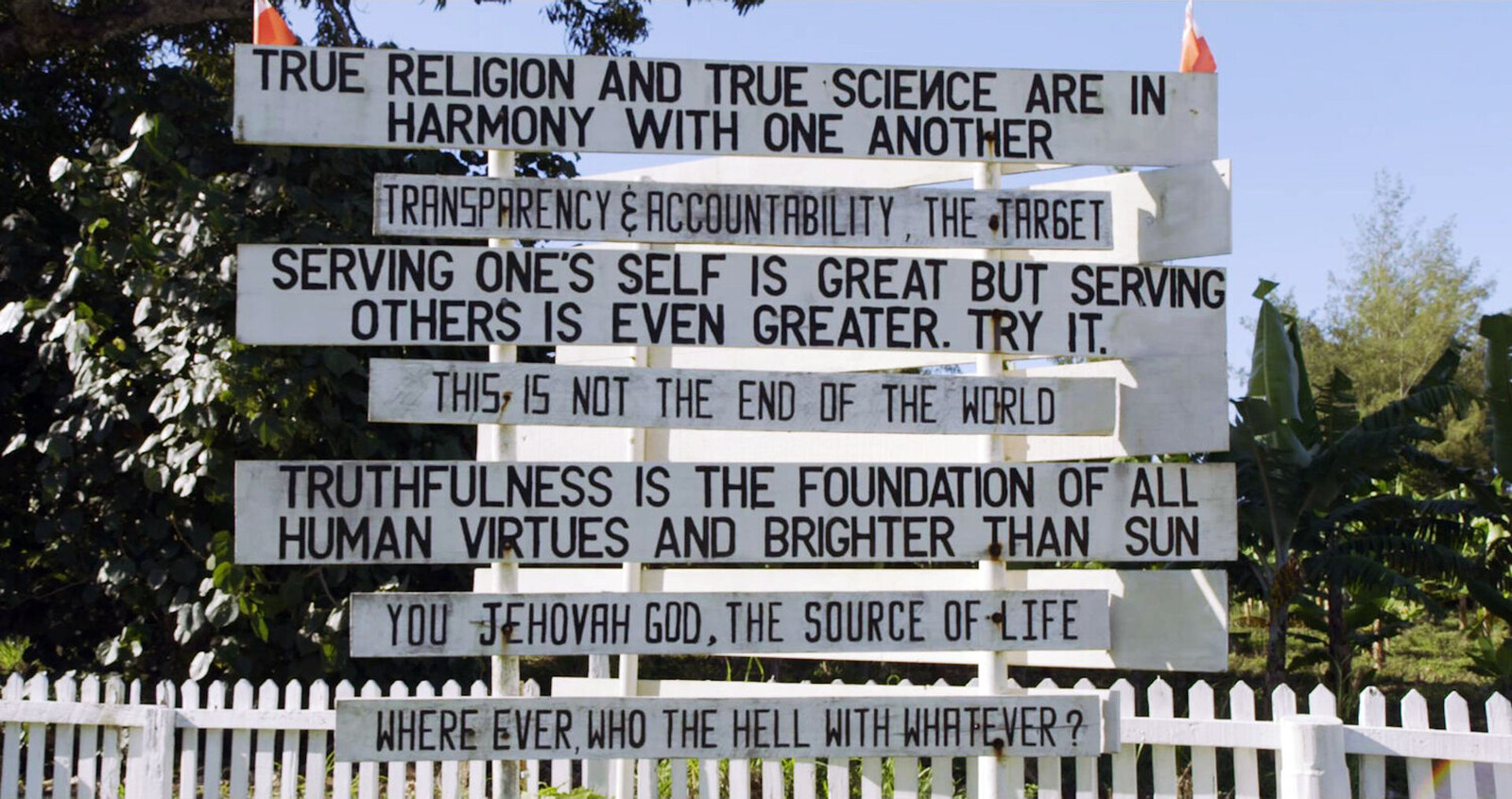
In Camille Henrot’s video Saturday (2017), presented at the Faena Festival as part of Miami Art Week, the artist zeroes in on the Seventh-day Adventist Church in cryptic yet hypnotic fashion. Images of church services, baptism ceremonies, and a backstage look at a TV prayer telethon service titled “Let’s Pray!” are paired with images of surfers, medical procedures, and commercial-like footage of whole foods that are part of the church’s recommended diet regimen. Against all of this, chyrons send up a constant stream of bad news and cryptic messages such as “Justice: the door remained shut,” “Education: they’re just parroting what they hear back,” and “Crime: there are bruises where he still grabbed me.” It is an opaque but astonishingly beautiful meditation on keeping one’s faith in a hopeless world.
Not that far away, outside the convention center where Art Basel Miami Beach takes place, members of the Jehovah’s Witnesses would stand outside each day trying to engage passersby on their faith, peddling their beliefs as diligently as the gallerists selling art in their booths. Miami Art Week, which includes the main fair, two dozen satellite fairs, and a seemingly endless cavalcade of events is art at its most …
December 8, 2017 – Review
Art Basel Miami Beach
Ricardo Mor
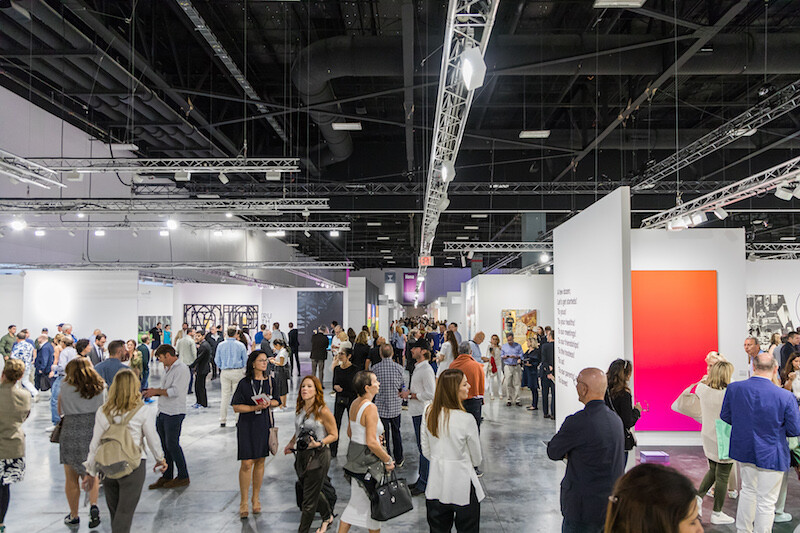
Remember to React. Jenny Holzer is trying to tell us something. She has been trying to tell us something since the early 1980s, when she conceived her “Survival” series, from which that sentence emerged. If you’re looking closely, it’s one of the first things you’ll see at Art Basel Miami Beach (on a small plaque inside the booth of Sprüth Magers, Berlin). Like many great artists from her generation, she was reacting to an especially volatile sociopolitical climate and this provocation was a pointed reminder of the necessity to fight apathy in outrageous times. It’s also a reminder that many of the galleries within the fair seem to have missed.
Last year, there were only a few short weeks between the American election and Art Basel Miami Beach’s schedule of events, and only a few artists and gallerists were able to properly respond to what had transpired: Jonathan Horowitz’s edited photograph Does she have a good body? No. Does she have a fat ass? Absolutely (2016) showed Donald Trump shooting golf balls into flame-colored skies; Rirkrit Tiravanija painted the phrase “The Tyranny of Common Sense Has Reached Its Final Stage” on November 9 editions of the New York Times; Blum & …
December 2, 2016 – Review
Art Basel Miami Beach
Monica Uszerowicz
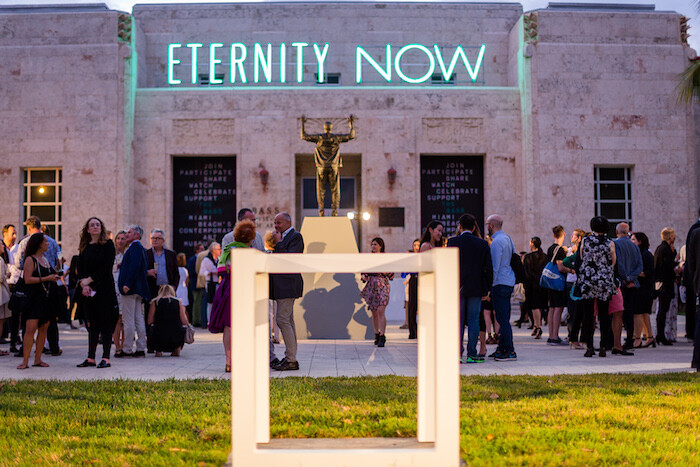
It has been hard, lately, to think about art. I don’t mean to imply that art isn’t powerful, transformative, or even a necessary distraction. The problem, really, is that it’s been hard to think about anything besides the new president-elect, or how every check I deposit helps fund the poisoning of the sole water supply at Standing Rock. I live in Miami, whose intellectual capacity gets chewed over in yearly think-pieces, whose image is brushed clean and sold to people buying the high-rises that raise my neighbors’ rents, whose roadways become clogged with VIP BMWs each December. Yesterday, on the way to the Convention Center that houses Art Basel Miami Beach (ABMB), my Uber driver says she lived in Wynwood long before it—or ABMB—became “a thing.” “I watched my baby grow up,” she tells me, personifying both her neighborhood and maybe all of Miami. “She’s an adolescent now, changing fast. She’s wild.”
But the show must go on, even if pre-existing economic and racial disparities feel nails-on-a-chalkboard loud, even if the shiny lacquer of a trade show seems unusually ostentatious. There’s no real panacean balm to the problem, if it’s fair to call it a problem at all. We should care …
December 4, 2015 – Review
Art Basel Miami Beach
Direlia Lazo
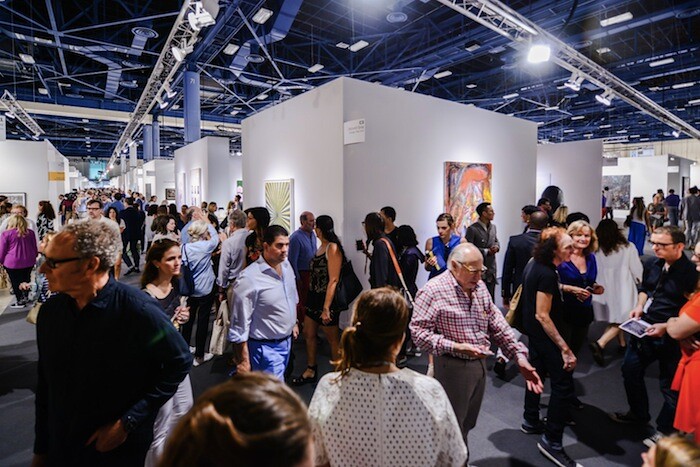
As is appropriate for its place in the calendar, Art Basel Miami Beach is a fair of reaffirmations and revisitations rather than new discoveries. Its great achievement has been, over its 14 years, to stimulate the artistic life of the city in which it takes place. More broadly, there are conflicting opinions about the role that Miami plays, or should play, in relation to Central and South America. Its cultural institutions, most notable of which are the Pérez Art Museum Miami, the Institute of Contemporary Art, the Cisneros Fontanals Art Foundation, the Bass Museum of Art, and the upcoming Faena Forum, hint at the city’s emerging position as a cultural hub for the region—at least in terms of infrastructure. It remains to be seen how they develop in terms of programming and integration at the local level.
Within the context of the fair, among the works to reflect on these North-South alliances, positions, and relations is Marta Manujín’s Paying off the Argentine Foreign Debt with Corn, “the Latin American Gold” (1985-2011), exhibited at Henrique Faria Fine Art, New York. The first image of a series of six in this allegorical photo performance piece shows Pop icons Andy Warhol and Minujín sitting …
December 5, 2014 – Review
Art Basel Miami Beach
Nickolas Calabrese
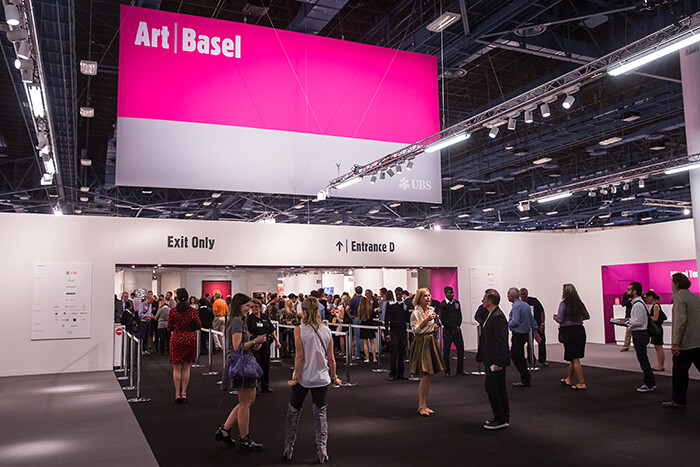
The site of the apocalypse is not spatial, but temporal, and right now it is in Miami. Every December, clouds of glowering collectors stumble onto and through each other, fingering abstract paintings and driving rented Lambos. Perversely, beyond the work of certain depraved dealers, conniving collectors, and the substandard artists that many of them choose to support (or ruin, depending on your point of view), there is also an abundance of good things to be found in this year’s Art Basel Miami Beach, especially if you strain your eyes away from the remarkably dreadful Christian Rosas, Israel Lunds, Ned Venas, et al.
My first interesting encounter was with New York gallery James Fuentes’s small but charming booth, which contains a large sculpture titled The Boat Book (2014) by Alison Knowles. It is an oversized wood-and-found-object structure loosely mimicking the form of a seven-foot-tall book (with a spine and pages), and displays an assortment of various nautical objects and images. Knowles has long been under-recognized in the artworld—her 1960s food-making and eating performances far predated those of Rikrit Tiravanija, yet she is infrequently mentioned in the same breath. Fittingly, it is not surprising, though slightly disappointing, to see Knowles’s work outside of …
December 9, 2013 – Review
Art Basel Miami Beach
Karen Archey

Within sixty seconds of walking into the Miami Beach Convention Center, I had already seen two White Men Wearing Google Glass—a new, supremely annoying demographic fitting seamlessly into the obnoxious displays of wealth that have long characterized Art Basel Miami Beach. Admittedly, there isn’t much surprising about the presence of the “Glassholes”: the 2013 edition of the fair saw the same privileged white guys, the same big, bad, dumb, shiny art, the same über-high heels complementing the same über-short skirts as previous years. While an eternal cycle repeated itself—new crops of hot, young artists were ushered in and yesteryear’s artists ushered out—perhaps what was really new was the return of overwhelmingly positive sales reports pouring in from Art Basel and the so-called “indie” fairs. “The flow of new people coming into the market and the scene keeps growing,” reports Josh Baer in his December 6th Baer Faxt dispatch. Adding to the feeding frenzy, he claims, is the fact that young artists are getting picked up and “hundreds of collectors are chasing a limited inventory—so these works at the fair might have 50 people asking to buy them.”
Signal the alarm, raise the flag from half-mast: we are officially in the throes …
December 6, 2012 – Review
Art Basel Miami Beach
Jane Simon
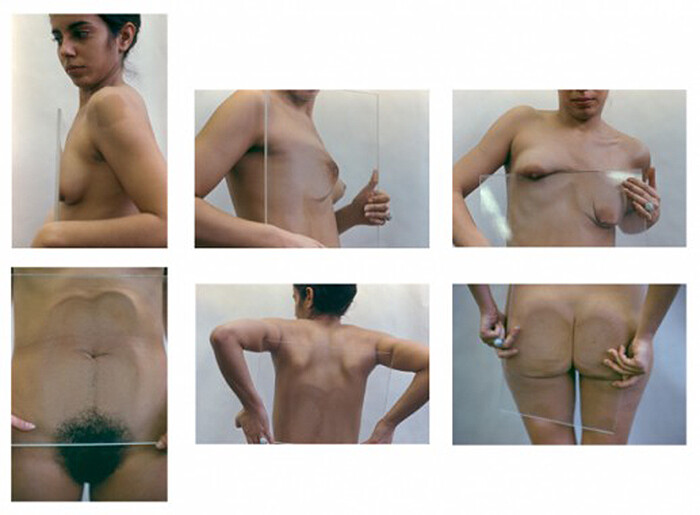
Much can be—and, of course, has been—said about the role of Art Basel in the global art market. It’s a fair, after all, that can turn certain “peripheral” cities into cultural centers. What was Basel, what was Miami, before the advent of the art fair? In particular, Art Basel laid down the blueprint for turning a beach town for retirees into a world-class city replete with sophisticated art venues. Surely during a few concentrated days, checkbooks are flung open as widely as the doors to some of the city’s venerable collections. Yet scores of art viewers attend the fair not to buy art, but to see things they rarely have the chance to experience otherwise, and even to be inspired.
During the brief time I had to scour the aisles and booths of the 2012 fair—ABMB’s eleventh iteration—I was struck more than once by galleries who had chosen to exhibit challenging, politically-charged work that is very arguably central to the evolution of art in the twentieth and twenty-first centuries. Take, for example, Ana Mendieta’s Untitled (Glass on Body Imprints) (1972) pulled out of the archive by Galerie Lelong. Typical Mendieta photos, we see her naked here, with plates of glass squashed …
December 5, 2011 – Review
The Other Art Basel
Dave Harper
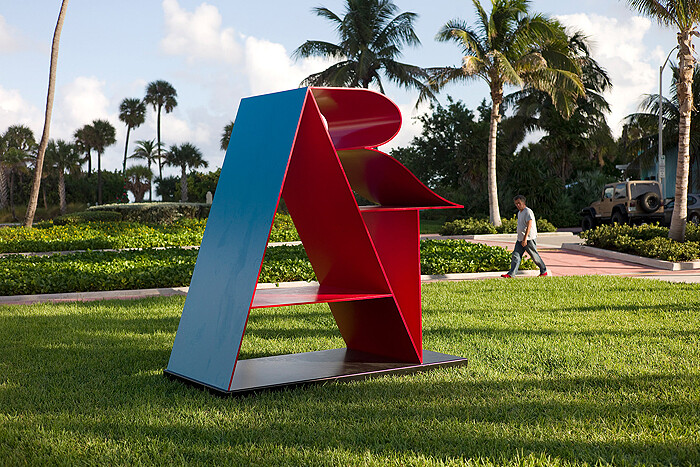
In the tenth year of Art Basel Miami Beach, the number and range of supplementary events has skyrocketed. From satellite fairs, such as the more established NADA and Pulse or the newer Seven, to well-known private collections, quirky pop-up exhibitions, and endless performances, the peripheries of the fair have become a study in contrasts, or, as Jonathan T. D. Neil smartly observed in his review of the main fair, of cognitive dissonance. Despite the tenuous political climate, of occupations happening throughout the US and, in particular, New York, very little of this energy seemed to make its way to Miami Beach. The only hint of any sort of such resistance existed as a storefront exhibition, not-so-cleverly titled “Occupy Art Basel,” located a stone’s throw from the Miami Beach Convention Center. Ironically, it seemed to be constantly closed for business—so much for the 99%. I had a strange feeling that those who just a week ago could be found heading down to Zuccotti Park in lower Manhattan were now pool-side at the chic Raleigh Hotel, eating free hors d’oeuvres and drinking fancy champagne, rubbing shoulders with those they had just rallied against. The culture of spectacle and conspicuous consumption clearly still …
December 2, 2011 – Review
Dissonant Returns at Art Basel Miami Beach
Jonathan T. D. Neil
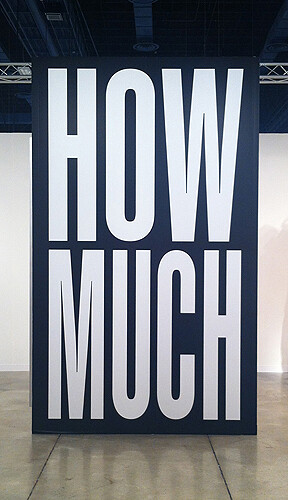
Cognitive dissonance. It’s a cliché by now, a toss-off term used to explain (or to keep from explaining) all sorts of contradictions, hypocrisies, moral and ethical failings, feats of self-loathing, etc. It has become a standard operating principle, the kernel of cynical reason, the delivery mechanism of mental detachment.
And we love it. We can’t get enough of it. Harmony is for hippie losers. Dissonance is complex, difficult, dangerous; it’s Heidegger in six-inch heels at a rifle range. It’s why we love family-guy politicians and the prostitutes they pay for dirty sex. It’s why we adore the billionaire record producers that rail against the 1% down at Occupy Wall Street. It’s why campus police (at UC Irvine) use pepper spray against peaceful student demonstrators, and why a customer (at Wal-Mart) uses pepper spray against her fellow Black-Friday shoppers. It’s why we believe in too-big-to-fail. And yes, it’s why we love Art Basel Miami Beach.
Where else could one find Mary Boone displaying huge black-and-white wall works by Barbara Kruger reading “HOW MUCH” and “BLEED US DRY” and “PLENTY SHOULD BE ENOUGH” directly across—literally facing—Dominique Levy and Bob Mnuchin’s solo extravaganza of Warhol’s early drawings (upwards of 100 of them) and wallpaper (a …
December 6, 2010 – Review
Art Basel, NADA, PULSE and SEVEN, Miami
Paddy Johnson

I lost 15 minutes of my life stuck in a traffic jam beside a sewer pipe in Miami. The cab from the new fair Seven to a restaurant in South Beach cost $35 dollars, and when I arrived I was afraid I smelled of shit. One of the less charming aspects of Miami remains: transportation is reliably a bitch.
But Basel was the best it’s been in my five years of attendance, and while NADA slips some, it’s still, by far, the best fair for emerging artists.
ART BASEL
Affectionately referred to as the Borg ship amongst some bloggers, Basel’s floor plan is basically a large grid of white cubes inside the Miami Convention Center. This format has the ability to make all art look the same, and this year was no different: a rather stale viewing experience. As always, the Modern and postwar art booths are located at the front of the building, while contemporary settles for the back. Probably not such a bad layout tactic—but I expect this is a design holdover from ten years ago when dead artists brought in a lot more money.
Of the bluer blue chip galleries, Acquavella had a pristine set of Andy Warhol Marilyn prints worth …